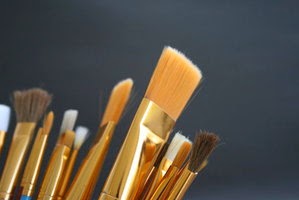Advertisement
Sedimentary Colors
Sedimentary, or granulating, colors are made from physically heavy pigments, Because of their weight, sedimentary colors sink into the water like pebbles. On rough or cold-pressed paper, they are first to land in the low, Hollow spots of the paper. On the smooth surface of hot-pressed paper, they settle quickly, but water rivulets create little river-like separations.
All this behavior translates graphically into texture. A sandpaper like grain is the nature of these pigments. When you mix them in a wet wash with other colors, they will look grainy and may separate, While transparent colors will dissolve in water like tea and stay active as long as the wash is wet. When sedimentary and non-sedimentary colors are mixed, each color is individually visible, for example, Manganese blue, Burnt Sienna, Raw Sienna and Phthalo Blue.
Sedimentary colors include :
. Ultramarine Blue
. Raw Sienna
. Raw Umber
. Sepia
. Cobalt Violet
. Viridian Green
. Manganese Blue

